Off-Camera Flash on the Cheap
Using off camera flash can be a great way to add dynamic lighting to your photos. It is particularly useful for portrait and product photography. But speedlight flashes are quite expensive. And if you have a compact camera with no hot-shoe you might think you can't use off camera flash at all.
Depending on your budget, you may want to look at a speedlight flash made by a third party manufacturer. The Chinese photographic accessories manufacturer YongNuo, produces a couple of flashes with varying power and features. Their cheapest model, the YN460II sells for around $50 (at the time of writing), much cheaper than the cheapest flashes produced by Canon, Nikon, Sony, etc.

If $50 is still a bit beyond your budget, you can opt for an old second hand flash. The Vivitar 283 can be picked up for about $10-15, though you will also need some way of triggering it off-camera.
Note that many old flashes (such as the Vivitar 283) have high trigger voltages, and if you connect them to your camera, may damage the camera electronics. For off-camera flash where the flash is not physically connected to the camera, this isn't a problem. If you do want to connect a higher trigger voltage flash to your camera, you can use a device such as the Wein Safe-sync, or modify the flash.
Triggering the flash off-camera
Many modern flashes, such as the YongNuo flash units, have a built in optical slave. This means that when the flash on the camera fires, the external flash will detect the burst of light, and fire itself as well. Older flash units tend not to feature this ability, so you instead have to purchase an external trigger for them.
Optical triggers are probably the cheapest method for triggering an off camera flash, however there is an issue that affects them you need to be aware of:
The pre-flash problem
When a camera's pop-up flash is used in automatic mode, it will fire what is known as a pre-flash, before the camera takes the photo. This pre-flash is a low intensity burst of light that the camera uses to determine how strong the flash should be in the image for a good exposure.
The camera fires the pre-flash, reads the reflected light level, determines the flash level, then takes the photo and fires the full flash.
Now, the problem with this comes when you are using an external flash that is triggered by using an optical trigger. The pre-flash will likely trigger the flash, and so your external flash may fire on the pre-flash, rather than the actual flash.
If your camera allows manual control of flash, this isn't too much of a problem. When set to manual flash, the camera won't fire a pre-flash. However, if your camera only allows flash exposure compensation to affect the flash brightness, (such as most compact cameras), then it is a bit trickier.
You can buy flash triggers that are specially designed to avoid triggering on a pre-flash. However, these do add more expense. For example, the Digital Slave Flash Sensor SF4 costs around $35. When added to the cost of the flash, you might be better off just buying a cheap modern flash (such as the YongNuo units) that already includes an optical sensor with pre-flash ignore.
Radio triggers
The other cheap option, but only for cameras with a flash hot-shoe, is to use a radio trigger. A cheap set of a transmitter (goes in the camera's hot-shoe) and receiver (slips over the flash shoe) can be purchased for around $20.
The benefit of this is that you don't need to worry about the pre-flash, as you are no longer using your camera's built-in flash. The fact that the built-in flash doesn't fire can often be a benefit - it means your subject will be entirely lit by the external flash. Though in some situations, where you want the subject lighting from the front as well, then this can be a disadvantage.
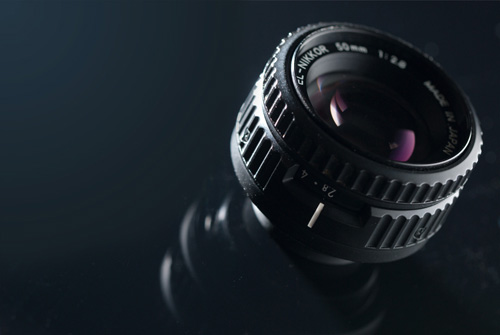
Flash triggered using a radio trigger
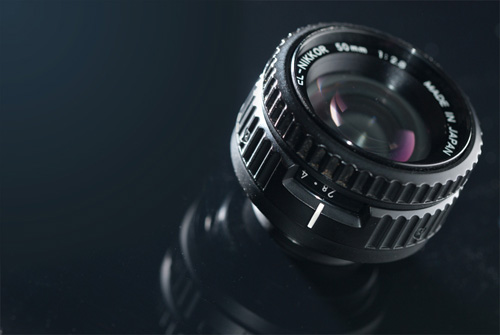
Flash triggered using an optical trigger (camera pop-up flash used to trigger it)
As you can see in the above images, an optical trigger means the camera's onboard flash works as a front fill light. Sometimes this can be what you want, sometimes not.
You might notice in the above photos that despite using only one external flash the subject is lit from both left and right. This was done by just using a piece of white polystyrene to the right of the subject to reflect some light back from the external flash.
Controlling the flash power
For creative lighting, you need some way of controlling the light output of the flash. One way of doing this is simply moving the flash nearer or further away from the subject, but this also modifies the area lit by the flash. Instead, it is far better to use a flash that allows manual control of the power.
The YongNuo flashes do allow manual control. Note that many of the lower cost camera manufacturer branded speedights do not allow manual control of the flash power except when connected to the camera.
If you're using an older flash bought 2nd hand, some have manual power controls. In the case of the Vivitar 283, it lacks manual power, but instead relies on an auto-thyristor. This is basically an auto flash, and by modifying the auto thyristor settings, you can adjust the flash exposure compensation.
But you can add proper manual control of flash power to a Vivitar 283 for only a couple of dollars. A 100k log (audio) taper potentiometer can be purchased at an electronics store, and used to replace the auto thyristor for manual control.
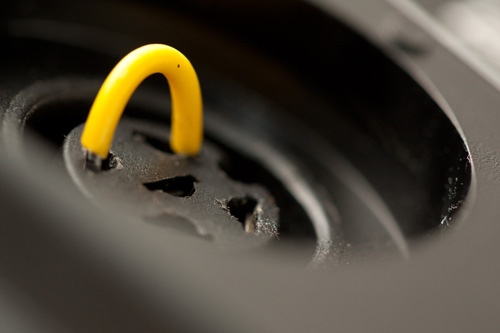
The auto-thyristor module pulls out from the Vivitar 283 flash leaving a series of 5 holes. Use a wire to bridge the top left and bottom left holes
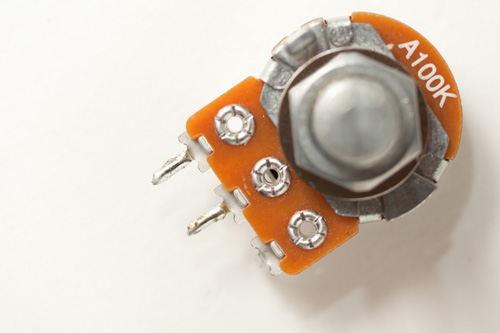
The center leg of the potentiometer connects into the top right hole on the flash, the left leg into the bottom right hole
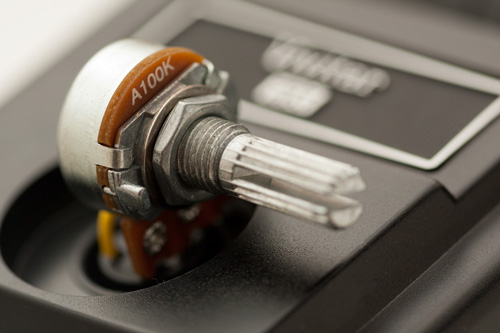
The very quick and cheap manual power modification
Note that most people doing this modification end up with something that looks much nicer and more professional, but you will likely need to modify the auto thyristor module in the process and purchase some extra pieces. See $3 Vivitar VP-1 Mod for 283 Flash [old thread, new questions] for examples of this modification that look a lot nicer.
Positioning the flash
Commonly a light stand is used for positioning a flash unit. You would have an adapter that clamps onto the spigot at the top of the light stand. The adapter then has a hot shoe at the top that you can slide the flash into.
Light stands can be purchased fairly cheaply, for example, about $18 for a cheap 2 meter stand. But you can probably get away without one at all. If you have a tripod, you can buy a 1/4" to hotshoe adapter for about $2. This screws onto the thread of your tripod (check the thread size to see if you need a 3/8" to 1/4" adapter as well). On top it has a hot shoe that you can fit the flash into.
Of course, you can also just lie the flash on any nearby suitable surface, such as a table, chair, or stool. Or you can use what is often referred to as a voice controlled lightstand - another person who will hold the flash in the position you want.
Using an external flash can have a great benefit for your photography over relying on the camera's built-in flash. And now you know that external flash doesn't have to be expensive using the tips above.
For the shot below, the image was lit using just the camera's pop-up flash. The result is an image with bad lighting that is not very appealing.
For this next shot 3 cheap external flashes (Vivitar 283s) were used, triggered by a radio trigger, giving a much nicer result. (This image has also been touched up in Photoshop).
Even with a very cheap compact camera, and triggering the flash optically, a much better result can be had. This last image is combined of two shots taken with a cheap external flash (YongNuo YN460 II) and the camera's pop-up flash, then touched up in Photoshop.
If you'd like to get into flash photography, but always thought it was too expensive, or there was nothing available because you only have a compact camera, then give cheap flashes a try. Enjoy experimenting with lighting!
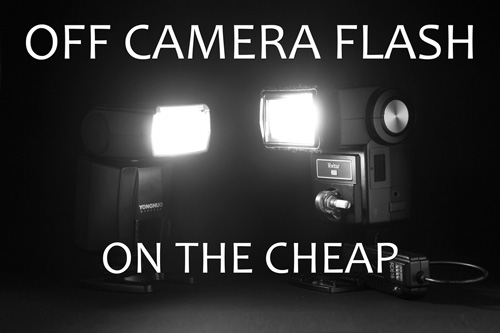








Is it possible that you provide me with detailed information on how to tweak the 283 for building a vari power knob. It is not clear for me, for instance how you hold , fix, and connect the potentiometer to the 5 holes and space where the sensor is removed from. Please advise. Thank you.
Hi Alfonso
There are some photos of the modification in the article – are they not showing up for you?
I’ll try and explain it in text, but the photos show it best if you are able to see them.
First, position the flash so that the flash head is pointing away from you, and the hot shoe connection is pointing towards you.
Remove the auto thyristor module.
Use a small piece of wire to connect the top left and bottom left holes.
Position the potentiometer so that the control knob points off to the right. Place the bottom leg in the bottom right hole on the flash, and the middle leg in the top right hole on the flash. You will probably need to bend the top leg of the potentiometer to allow fitting the other two legs into the holes. The top leg does not connect to anything.
The potentiometer may stay secure in the slots just like that. If it is loose, you can apply a small amount of solder to the potentiometer legs. Just enough to make them a little thicker so they will grip in the holes well. Apply the solder to the legs when the potentiometer is not in the flash, unless you want to permanently solder it in place. Ideally you want the legs of the potentiometer to have the same thickness as the pins of the auto-thyristor module, since this fits in the holes firmly.
If you can see the picture of the potentiometer, you can see that I’ve applied a small amount of solder to the bottom and middle legs and the top (unused) leg is bent over. I have a number of Vivitar 283s, some required solder being added to the potentiometer legs for a tight fit, on one the potentiometer fits in firmly without the legs having to be thickened with solder at all.
Nothing connects into the middle hole on the flash.
Note that while my modification is easily reversible (just pull the potentiometer and wire out) and doesn’t damage the auto thyristor module at all, you can get a much nicer looking result with a bit more work. You can see less hacky looking modifications other people have made, with more detail on how they did it here: $3 Vivitar VP-1 Mod for 283 Flash [old thread, new questions].
Thank you for the information…
Additional questions now arise, some users mention:
– 100k audio taper, “stereo” volume control
– 100k linear taper pot with a bypass switch
– 250k audio taper or log pot
What is the best option for FULL power manual control?
For your time, consideration, and support, thank you again.
Best,
AL
Hi Alfonso
I can’t tell you which is best, but I just did a quick test using the 100K log (audio) taper potentiometer that I have. It allowed control from full power down to something like 1/256 power.
More info
I compared the Vivitar 283 with no potentiometer (full power) vs with the potentiometer at full setting (or maybe it is low setting?) and the power was the same. The YN460-II flash was about the same brightness as the Vivitar at full power as well.
With the YN460-II set at its lowest power of 1/64, the Vivitar 283 was darker at lowest power, which is why I think it is about 1/256 power at the lowest setting.
On a separate note, I noticed that the bottom of the frame had a darker area with the Vivitar 283 in my test shots. However, I can’t find any reference to this online, and believe it is because I have modified my 283s by removing the fresnel lens.
Vivitar 283 No Potentiometer (full power), f/11
Vivitar 283 with potentiometer set to full power, f/11
YongNuo YN460 II set to full power, f/11
YongNuo YN460 II set to 1/64 power, f/5.6
Vivitar 283 with potentiometer set to minimum power, f/5.6
And on another note, the YongNuo flash at first refused to fire when triggered by my radio trigger. I switched out the batteries in the radio trigger from rechargeable to alkaline ones, and then it worked. So the YN460-II must need a higher voltage to trigger it. (Alkaline batteries are 1.5V whereas rechargeables tend to be around 1.2 – 1.3V).
This question is not related to the vari-power issue but instead to how I get my 283s to work w/my Coolpix S9100. The 9100 has no external connection or hot shoe for flash so I am attempting to use the on-camera flash as a trigger for my off-board slave units. I am using a Wein WP-XL Ultra Slave optical trigger which seems to work just fine when triggering the 283. Problem is it is not somehow in sync w/the shutter. The on-camera flash is set to manual mode (not red-eye reduction) and triggers the 283 just fine but the 283 lighting is not showing up in the resultant photo (either firing too early or too late). The on-camera flash only fires once. Any suggestions?
Hi Wilson
As far as I can tell from the Coolpix S9100 manual, the camera does not feature manual flash mode (where you set what power the flash should fire at). So the camera would always fire a pre-flash before the real flash. This pre-flash would trigger the optical slave, so it fires the 283 before the actual exposure starts.
To get around this you’d need to use an optical trigger that can either ignore the pre-flash, or allows setting a short delay between when it is triggered and when it fires the attached flash. However, I have a relatively cheap optical trigger with pre-flash delay option, and it doesn’t work with my 283s (works fine with more modern flashes). There are more expensive pre-flash aware optical triggers, but the price of these are similar to the cost of a cheap flash with built-in pre-flash aware optical trigger mode.
So I think your best bet would probably just be forgetting about the 283 (for now – it may come in useful with a different camera in the future), and get a cheap flash with built-in optical trigger that is pre-flash compatible.
Dave
Dave,
Appreciate the quick reply. On closer examination the S9100 definitely has a pre-flash. Am thinking about hanging onto the 283s to use later w/a Nikon D800/810 which I would like acquire to go w/my pre-digital Nikon lenses. Do you see any issue w/the 283s working w/the D800/810 in optical trigger mode?
Thanks
Hi Wilson
The 283s should work fine triggered by the D800/810 pop-up flash so long as you put the camera’s flash in manual mode. They won’t work with the camera’s flash in TTL (auto) mode as that will fire a pre-flash, giving the same problem you have at the moment.
Usually when you’re using off-camera flash triggered by the camera, having the camera’s flash in manual mode is the best choice anyway. It lets you set the camera flash to low power and have the majority of light provided by your off-camera flash.
Dave